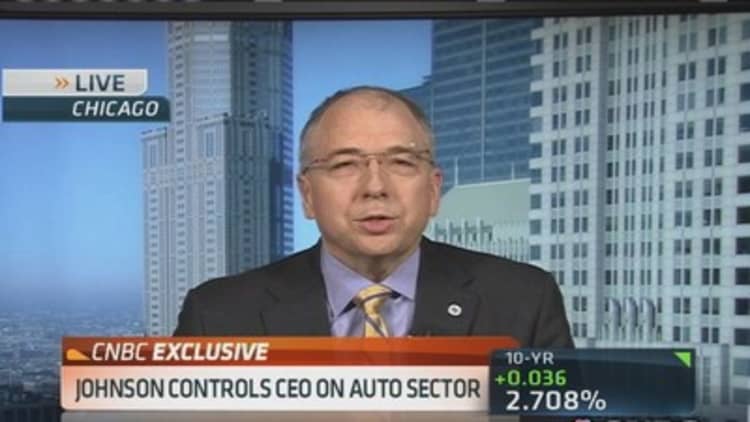When Volkswagen begins delivering the first of its ultra-efficient XL1 coupes by midyear, motorists will need to get used to the idea of looking at a set of three video screens, rather than rear and sideview mirrors, to see what's happening around them.
By replacing the traditional mirrors with micro-compact cameras built into the car's body, VW designers were able to significantly improve the vehicle's aerodynamics—a critical factor in helping it achieve a record fuel economy.
But while VW plans to build only 250 of the cars, none will be shipped to the United States. That's due, in part, to federal U.S. rules that require all vehicles be equipped with left- and right-side exterior mirrors.
Read MoreHow to find the best vacation rental bargains
But that could soon change—at least, the auto industry hopes it will.
The Alliance of Automobile Manufacturers—a consortium that includes VW, Toyota and General Motors—as well as Tesla Motors, has petitioned the National Highway Traffic Safety Administration to permit manufacturers to replace mirrors with digital cameras.
Read MoreCongress eyes early warning system for auto defects
The request comes on the heels of a NHTSA announcement made last week, which outlines a long-delayed mandate that will require all vehicles to be equipped with backup cameras starting in May 2018.
The concept of using more aerodynamic cameras has been something automotive designers and engineers have been exploring for decades. But automotive regulators have been slow to take action to put new rules in place.
More from The Detroit Bureau:
March car sales bounce back from winter freeze
A simple ticket can double your insurance premiums
Detroit Electric abandons plan to produce battery sports car in Motor City
"You can actually get these things changed, but it takes ages," lamented Tesla CEO Elon Musk during an industry conference last year. The maker would like to carry over the side cameras shown on its Model X SUV concept and use them on a production version.

Automakers are hoping that the time is finally right to accept a high-tech alternative to the basic outside mirror—especially since using digital cameras could allow the integration of advanced safety systems, such as blind-spot warning.
Last month's move to set a timetable for installing backup cameras could be the signal the industry is waiting for. Automakers have also taken preliminary steps they hope will ease any lingering concerns on the part of NHTSA rule-makers.
Read MoreNHTSA: Vehicles required to have rear camera by 2018
Honda, for example, launched its LaneWatch system with the debut of the 2013 Accord model. The car still has the requisite sideview mirrors but is also equipped with a camera that peers into the passenger-side blind spot that motorists normally miss. The image is displayed on the same center console-mounted screen that normally handles navigation and infotainment duties.
Nissan, meanwhile, uses a network of cameras mounted around the vehicle to give motorists a bird's-eye view of surrounding pavement and obstacles through its Around View Monitor.
Going forward, a smart digital mirror could flag a Nissan driver's attention to objects in a vehicle's blind spot, by switching between a normal rear mirror view and a camera at the driver's command.
How soon the NHTSA might respond to the alliance's petition remains to be seen, but industry planners are hoping the government will move with more haste.
—By CNBC Contributor Paul A. Eisenstein

